Prelude & Fugue in c minor for Organ Op. 11
Details
- Instruments
- Genres
- Formats
- Instructionals
- Levels
Description
SKU: S0.429011
Composed by Steven Monrotus. Contemporary Classical,General Worship,Repertoire,Technique Training,Recital. Score. 16 pages. Published by Steven Monrotus (S0.429011).This work was composed for an organ with 2 manuals and pedals minimum. It would make for not only effective recital and lesson material but a place could be easily found for it in the worship service where it might serve as a general prelude, with the Fugue possibly reserved for the postlude. This is an energetic Prelude worked in continuous expansion form paired with a very bold, related double Fugue having a tripartite structure in which both subjects are given separate expositions of their own, then combined. The Prelude begins in an unusual way in the dominant tonality (g minor) with a troubled theme which boils up into 4 voices from the opening, voice by voice, over the tension of a secondary dominant pedal point. This theme is derived from rhythmic transformation of the Fugue's 1st subject, thus lending a very strong sense of unity to the work. The same relentless driving rhythm is maintained clear through to the end of the Prelude. In the opening the alto voice is silent and replaced by a low tenor (baritone) to complete a 4 voice texture. Upon the entrance of the alto voice the low tenor remains silent until the close. After the Prelude theme is presented there is a sequence followed by full cadence in the home key, then a quick modulation to the relative key (Eb Major) where the texture thins to 3 voices. Another modulating sequence then takes the music into the subdominant of the relative key (Ab Major) where the theme is reiterated over another dominant pedal point. A sudden shift to the subdominant key (f minor) employing yet another dominant pedal point then leads the Prelude to conclude in 5 voices with a Picardy 3rd over the full power of the instrument. During this closing the home key, kept clandestine until then, becomes clear finally. The 4 voice Fugue which follows borders on being a virtuoso work, seems to rise from the foaming Prelude, and has an opening exposition worked in typical tonic-dominant common practice manner. In this section a subject and 3 countersubjects are worked in quadruple counterpoint. The subject begins on scale degree 1 and is supplied with a real answer. Following the exposition the first 2 countersubjects enter successively in the bass. This 1st section passes through 3 related keys separated by 2 episodes in 3 voices in which the pedal line drops out. In both of these episodes variation B of the countersubject from the 2nd section enters in the top line. This provides a very strong sense of unity between the first 2 sections of the work. The 1st section closes on a full cadence in the home key, after which a 2nd subject in quicker notes and its own countersubject are then introduced in an exposition of their own and developed separately. Here the 2nd subject also begins on scale degree 1 and is supplied with a real answer, but in the home key. Only variation A of the countersubject is used in thi exposition. As the 2nd subject enters in the soprano an unrelated counterpoint enters in the tenor to keep at least 2 voices moving at all times and help keep the energy level of the music from falling off. This middle section is remarkable in that the first 3 entries in the exposition are all in the home key, the 4th voice enters very boldly in the relative key, and the countersubject has 2 versions (A and B) differing only in their last halves. This exposition is followed by an episode in which variation B of the countersubject is quoted in the bass. One more entry in a related key employing variation B of the countersubject leads to a full cadence in the home key. In the 3rd and final combinatory section both subjects enter as a pair in the home key. A 3rd line quoting the 1st countersubject from the 1st section is then added to this pair in the dominant key, creating a 3-part texture When this 3rd line enters the music modulates quickly from the dominant into the relative key, then back to the dominant. Both subjects, the 1st countersubject from the 1st section, and variation B of the countersubject from the 2nd section are then combined in the home key. An episode then ensues which quotes the 1st subject in the top line and modulates to the relative key. This is followed by an entry of the 1st subject and variation B of the countersubject from the 2nd section, still in the relative key. An 8-bar pseudo-stretto passage then unfolds in which the 2nd subject enters in the bass and follows itself, somewhat modified, in the soprano at a distance of a half bar at the same time that the tenor line carries variation B of the countersubject from the 2nd section. The 1st subject then enters in the bass and follows itself in strict imitation, in the alto voice, at a distance of a half bar. A coda of 10 bars concludes the work, during which the 1st subject is inverted in the soprano at the same time that the low tenor (baritone) voice returns to replace the tenor and to carry an additional figure. This figure is then treated in imitation at the distance of a half bar over a held C in the middle of the pedalboard as the texture thickens to 5 voices with the reentry of the tenor. The finality needed for the home key to reassert its predominance during the coda is provided by this tonic pedal point, a marked slowing of the tempo, a thinning of the texture down to 3 voices, and a full cadence in the home key having a very big dominant 7th chord heavily accented over a low C double pedal with a delayed resolution to a final chord in 7 voices employing a double Picardy 3rd, exploiting to the full the downward sonorities of the instrument and the tonic-dominant tension of the home key. This music provides an opportunity to present a very bold Prelude paired with an even bolder double Fugue having a very distinctive central section and a scheme of keys which explores the boundaries of fugue writing. In this work the stretch for the hands is kept at an octave or less. Registration suggestions along with indications for hand division are included with the score. Length: 164 measures. Duration: 5:38. Composer Bio page: OrganBench.com.
Digital Downloads are downloadable sheet music files that can be viewed directly on your computer, tablet or mobile device. Once you download your digital sheet music, you can view and print it at home, school, or anywhere you want to make music, and you don’t have to be connected to the internet. Just purchase, download and play!
PLEASE NOTE: Your Digital Download will have a watermark at the bottom of each page that will include your name, purchase date and number of copies purchased. You are only authorized to print the number of copies that you have purchased. You may not digitally distribute or print more copies than purchased for use (i.e., you may not print or digitally distribute individual copies to friends or students).
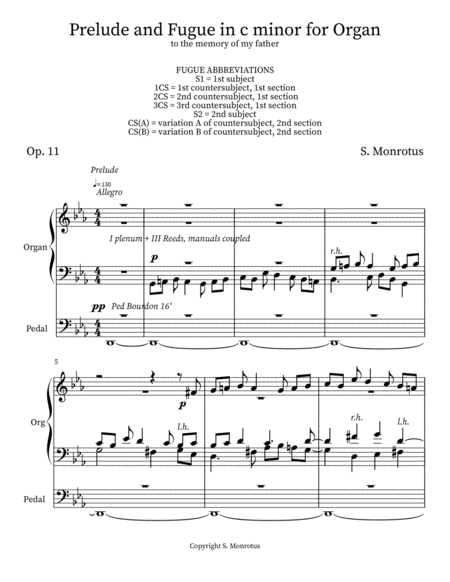
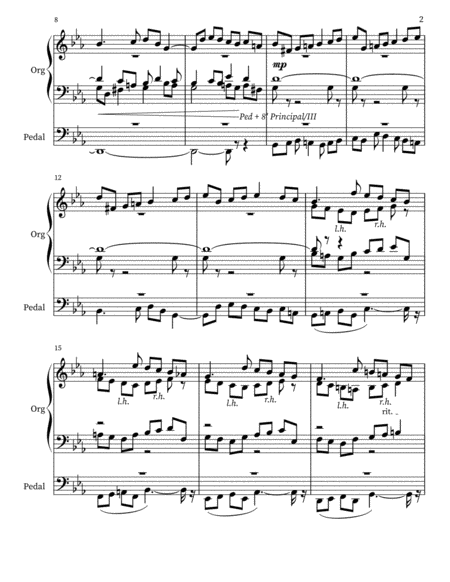
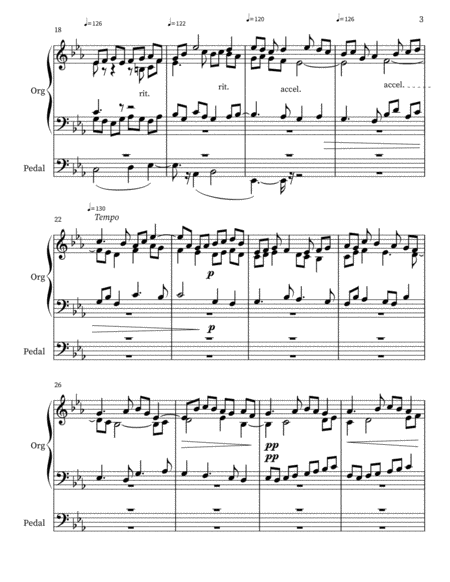
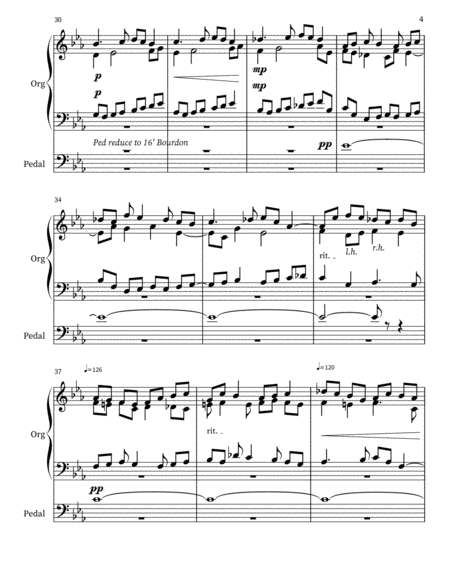
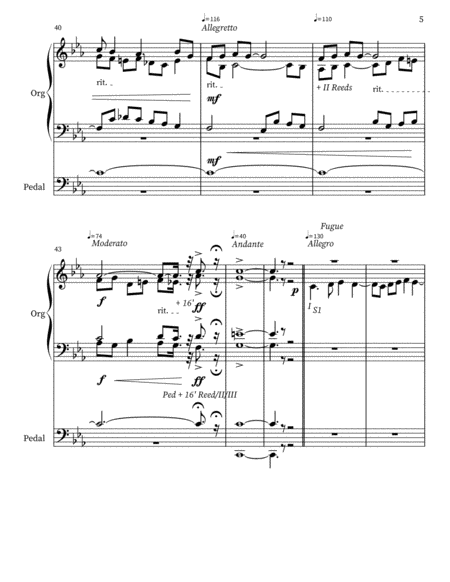
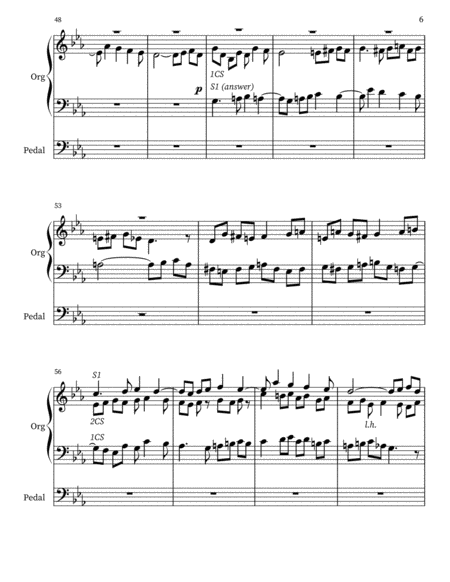
 Share
Share